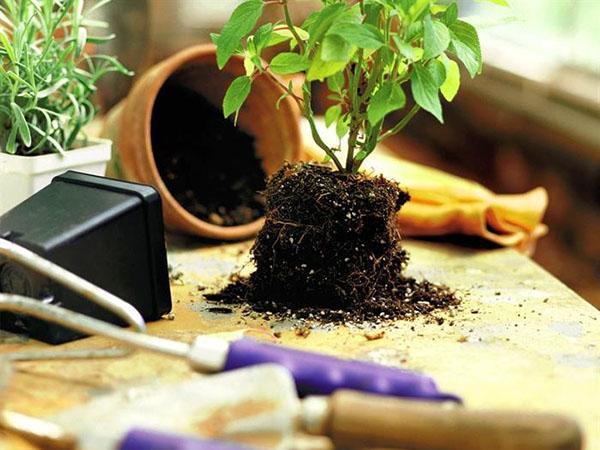Transplanting indoor plants: time and technology
 Transplanting indoor plants is an eternal theme for all flower growers. Many people ask if it can be carried out in the fall or in cases when the plant is flooded. Others are interested in what to do with a newly acquired copy. The answer to all these questions will become obvious if you understand the nature of domestic cultures.
Transplanting indoor plants is an eternal theme for all flower growers. Many people ask if it can be carried out in the fall or in cases when the plant is flooded. Others are interested in what to do with a newly acquired copy. The answer to all these questions will become obvious if you understand the nature of domestic cultures.
Transplanting indoor plants after purchase
First, you should pay attention to the condition of the foliage and stem. If the flowerpot is blooming, it is better to give it time until it completely sheds the buds. Nevertheless, in the store, it can be poured or overdried. As a result, they begin to fall off ahead of schedule. At the same time, the bush gradually loses its decorative effect. In this case, a houseplant transplant is mandatory. The procedure is carried out according to the following scheme:
- take out an earthen lump;
- examine the rhizome;
- cut off decayed or dry processes;
- cuts are treated with activated carbon;
- shake off the old substrate, sometimes rinsing the root system with water.
It is dangerous to wait until flowering, because you can lose the entire plant. But young specimens bursting with health are left for two to three weeks for acclimatization, and then transferred to a permanent place of residence. During the quarantine period, it cannot be placed next to all other indoor plants. Otherwise, if it has pests or diseases, they will all appear on neighboring exhibits.
Adult store-bought seedlings often need replanting. Over the years they spent in the transport substrate, the soil has lost all nutrients.
When the season matters
All cultures are divided into two groups: for some, the season matters, and for others, not. Succulents, they are also cacti and ficuses, perfectly survive such events both in winter and in summer. All other decorative varieties are transferred to a new place only in the spring, when they are in a semi-dormant state. However, even if all the rules are followed, there are emergency transplants when:
- the flowerpots have grown greatly in breadth, as a result, they simply do not have enough space for full development;
- have increased significantly in growth in a short period of time;
- carry out the method of cuttings.
Beginner growers are advised to use pots with holes so as not to flood the flowerpot. Experienced or self-confident gardeners only need a drainage layer.
Among other things, there are varieties that do not survive in pure peat. For this reason, they must be transplanted. During the procedure, it is important to shave off as much of the transport soil as possible. So, when planning a winter or autumn transplant, pay attention to the seriousness of the cause.
Transfer or transfer are opposite concepts
Transfer is done when you want to replace the pot. At the same time, the earthen lump is preserved, trying not to destroy it. This is especially true for rooted cuttings. They are planted in already prepared soil, so they are simply transplanted into a larger container. However, there are crops (for example, hibiscus), for which one type of planting substrate is intended for rooting, and completely different for full-fledged seedlings. Therefore, they are entitled to a full change of soil mixture.
When transplanting indoor plants, it is not recommended to completely spread the roots. Many plants are so tightly wrapped around the ground that it will only harm them.As you can see, in any business you cannot do without intuition, when the gardener's heart feels the mood of the flower.